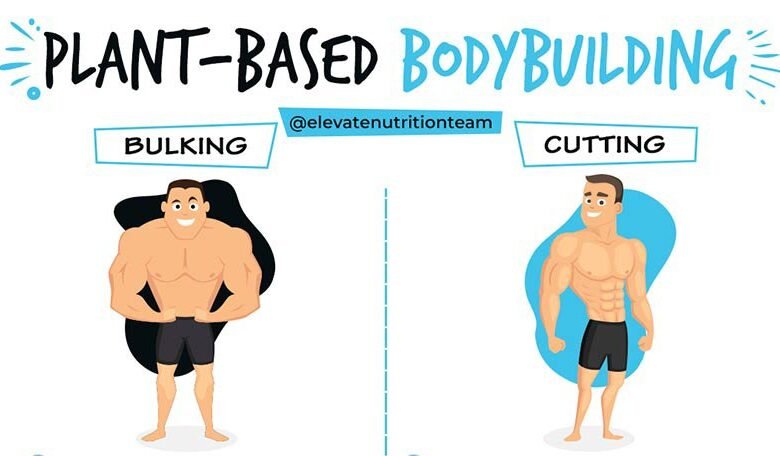What is Bulking and Cutting?: A Step-by-Step Guide

What is Bulking and Cutting?: A Step-by-Step Guide In the fitness world, you might hear the terms “bulking” and “cutting” often. These two phases are crucial for anyone serious about bodybuilding or fitness. This article will explore what bulking and cutting are, focusing especially on the cutting phase and how it can help you achieve your fitness goals.
What is Bulking?
Definition of Bulking
Bulking is a phase where the goal is to gain weight, primarily muscle mass. During bulking, individuals consume more calories than they burn. This caloric surplus supports muscle growth.
How Bulking Works
The idea behind bulking is simple: when you eat more calories than your body needs, it has the extra energy to build muscle. Typically, this involves increasing protein intake, which is essential for muscle repair and growth. Carbohydrates are also increased for energy, while healthy fats support overall health.
Types of Bulking
There are two main approaches to bulking:
- Clean Bulking: This involves gaining muscle with minimal fat gain. Foods like lean meats, whole grains, fruits, and vegetables are staples in this approach.
- Dirty Bulking: This method allows for the consumption of a wider range of foods, including those high in sugar and unhealthy fats. While this can lead to faster weight gain, it often results in more fat accumulation.
Importance of Training During Bulking
Strength training is critical during the bulking phase. To maximize muscle gain, you must lift weights regularly. The combination of a caloric surplus and resistance training leads to optimal muscle growth.
What is Cutting?
Definition of Cutting
Cutting is the opposite of bulking. It aims to reduce body fat while preserving as much muscle mass as possible. The goal is to achieve a leaner, more defined physique.
How Cutting Works
To enter a cutting phase, you must create a caloric deficit. When your body is in a deficit, it will use stored fat for energy.
Key Principles of Cutting
- Caloric Deficit: The primary rule of cutting is to eat fewer calories than you expend. Tracking your intake is essential.
- High Protein Intake: Maintaining a high protein diet helps preserve muscle during a calorie deficit.
- Balanced Diet: While reducing calories, it’s crucial to consume a variety of foods. Include healthy fats and complex carbohydrates to maintain energy levels.
Types of Cutting
- Moderate Cutting: This approach involves a slight calorie deficit, allowing for gradual fat loss while retaining muscle.
- Aggressive Cutting: This method uses a larger calorie deficit for quicker results. However, it requires careful monitoring to avoid losing too much muscle mass.
The Role of Cutting in Body Transformation
Why Cutting is Important
Cutting is essential for anyone looking to reveal the muscle gained during the bulking phase. It helps define the muscles and creates a more aesthetic appearance.
Timing Your Cutting Phase
Many people transition into cutting after a bulking phase. The timing depends on personal goals and body composition. Assess your body and determine when you’re ready to cut.
Common Mistakes During Cutting
- Severely Restricting Calories: While a deficit is necessary, cutting calories too low can lead to muscle loss and metabolic slowdown.
- Neglecting Strength Training: Continuing to lift weights during cutting is vital for preserving muscle mass.
- Ignoring Nutritional Balance: Focusing solely on calorie reduction can lead to nutrient deficiencies. Ensure you’re still eating a balanced diet.
Tips for Successful Cutting
Meal Planning
Planning your meals is crucial during cutting. Meal prep helps keep you on track and reduces the temptation to indulge in unhealthy foods.
Stay Hydrated
Drinking plenty of water is essential. Hydration aids metabolism and can help control hunger during a calorie deficit.
Monitor Your Progress
Tracking your weight and body measurements can help you assess the effectiveness of your cutting phase.
Incorporate Cardio
Adding cardiovascular exercise can enhance fat loss. However, balance it with strength training to maintain muscle mass.
The Science Behind Cutting
Understanding Your Metabolism
Your metabolism plays a significant role in cutting. Knowing your basal metabolic rate (BMR) can help you tailor your cutting strategy.
Energy Balance
Cutting is all about energy balance. Understanding how to create a sustainable deficit is crucial.
Hormonal Factors
Hormones can impact fat loss during cutting. Cortisol, the stress hormone, can promote fat storage, while hormones like leptin and ghrelin regulate hunger. Managing stress and getting enough sleep are vital during this phase.
Psychological Aspects of Cutting
Mental Preparation
Cutting can be mentally challenging. It often involves strict dieting and intense workouts. Mental preparation is key to staying committed.
Stay Motivated
Set realistic goals and track your progress. Celebrate small victories to keep yourself motivated throughout the cutting phase.
Avoid Obsession
While cutting is about reaching your goals, it’s essential not to become obsessive about food and weight. Maintain a healthy relationship with food and listen to your body.
Conclusion
In conclusion, bulking and cutting are fundamental phases in the fitness journey. Bulking focuses on muscle gain, while cutting aims to reveal that muscle by reducing body fat. Understanding the cutting phase, its principles, and its importance can help you achieve a leaner physique.
Remember, consistency is crucial. Stay committed to your nutrition and training. Whether you’re bulking or cutting, always prioritize your health. Embrace the process and enjoy your fitness journey!
This article is structured for good readability, with a focus on the keyword “cutting” while maintaining unique content. If you have any specific adjustments or requests, feel free to let me know!




